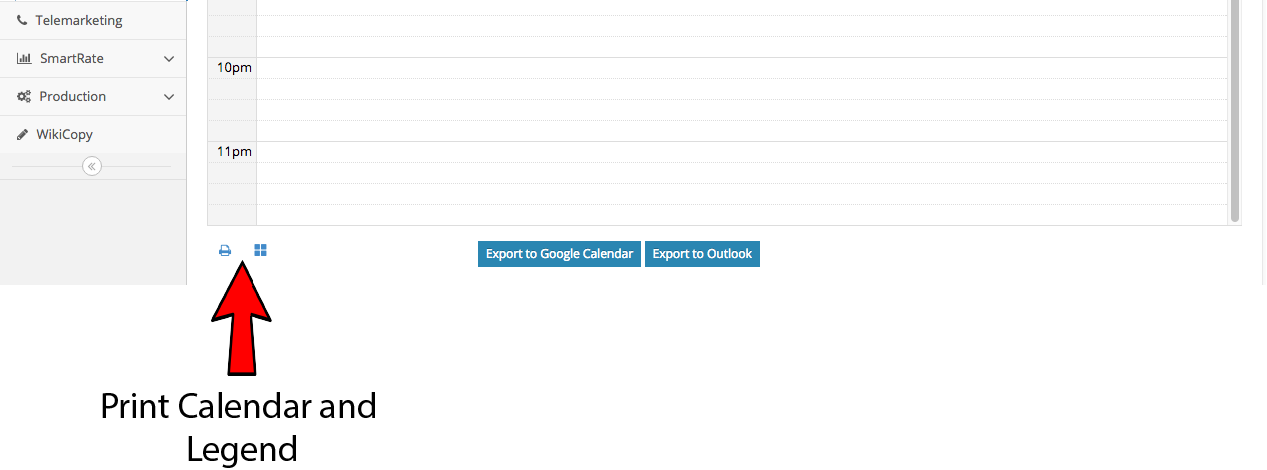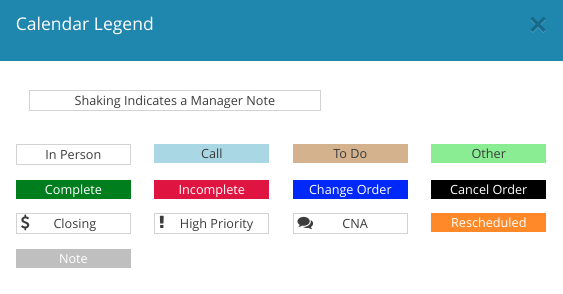Calendar Training – Scheduling A New Appointment
Textual documentation is below video.
Scheduling An Appointment In Your Calendar (click to open)
Get To Know Your Calendar: Taking a detailed look at completing your daily appointments
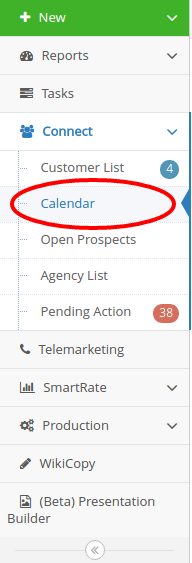 Adding appointments to your calendar:
Adding appointments to your calendar:
- Click “Connect” on the left side of the screen.
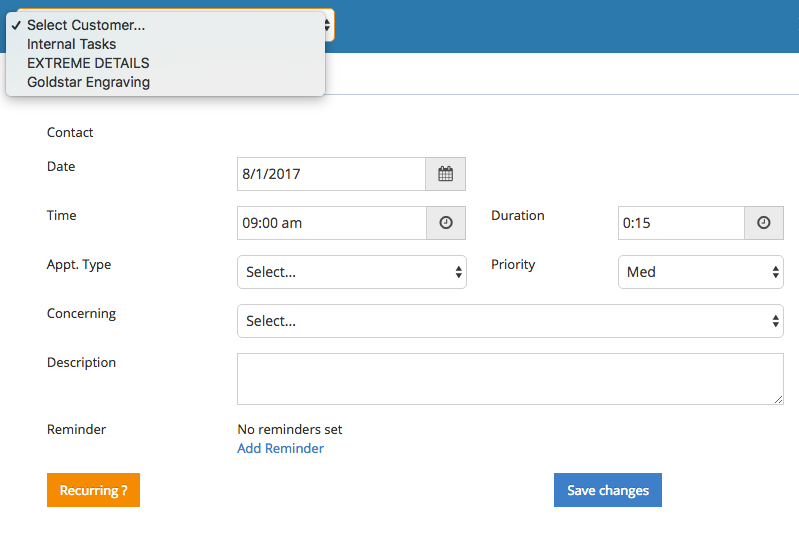
- Select “Calendar”.
- Click on the date and time you would like to make the appointment for.
- After clicking the date and time you choose, click on the drop down menu that says “Select Customer” on the pop up that slides out to the right of the screen.
- After filling out the “Appt Type” and “Priority”, then select what the appointment is concerning
(Concerning types are decided by your manager. If you do not see the option you are looking for, speak with your manager).
For any type of closing you MUST input the Contract Total for the contract amount regardless if it is an annual contract or not. In other words, what is the total that you will be asking from this customer on this appointment?
After entering the total, there is a field to the right asking for your confidence level in percentage format. It is important to be honest when entering your “confidence percentage”. This will help your manager decide whether to help you with this closing.
- Optional: You can invite anyone in the company to your appointment in the “Would you like to invite anyone?” section at the bottom. This will send them an email and put it on the invitee’s calendar as well.
- Finally you can click the blue “Save Changes” button at the bottom of the form.
Appointments will not be created until you click on the blue “Save Changes” button
Most Important!!! Completing an existing appointment (click to open)
This is by far the most important component to influence FM’s calendar. In order to fill out your calendar correctly in influence FM, you must complete the current appointments you already have set.
“Completing your appointments” means that you say what happened on that appointment with your client and also what is your next step with that client.
Do this by clicking on that current appointment in your calendar.
Make sure you are on the “complete” tab and describe what happened on that appointment. You must fill out the “what’s next” section of the calendar to complete that appointment.
This is so you never forget to do anything for your clients and nothing slips through the cracks. As sales reps, you have very busy days and it can be easy to forget things. With this system, it forces you to do your next step at the same time. You may be thinking “I don’t always know what is next” which is fine, just put something on your calendar so you have a future appointment. You can always adjust the details on those appointments at a later date. As you get closer to those dates you will probably have a better idea of what you need to do and you can adjust the details. This is just putting something on your “radar” to make sure you always have a future action to take for that client.
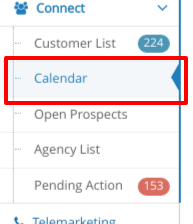 You must open your calendar to begin this step.
You must open your calendar to begin this step.
Completing an existing appointment:
-
- Once you are ready to report the outcome of a scheduled appointment, click on that appointment in your calendar.
- When you click on that appointment, a pop-up (to the right of the screen) will appear. Here you will fill in the details of what happened on that appointment.
- Next to “What Happened?” either select “Did Complete” or “Did NOT Complete” (We recommend that you reschedule the appointment instead of using the “Did NOT Complete” (this is up to your manager) An example of when you would use “Did NOT complete” is if a client is on vacation or in the hospital for an extended period of time. We suggest that you explain this to your manager in the details field and schedule the next appointment on an estimated date when you think you may see that customer again.
- Before you “Complete” the appointment, you MUST also select something under the “What’s Next?” drop down menu unless you simply need to reschedule the appointment. Those directions are under 4a. (pictured below) There are four options. 1st: “Schedule an Appointment” 2nd: “Out of Business” 3rd: “Send to Prospect List” 4th: “I Don’t Know”. The “I Don’t Know” choice does nothing. It’s just dialog that explains the philosophy of our calendar. Do note that your schedule is never set in stone. You can always adjust the appointment later. In sales, you don’t always know the exact time, details or date you will see your customer. Setting a future appointment ensures that your customer is on your radar with a next step. When it gets closer to that appointment, you will have a better idea of when you will be able to meet with your customer. At that point, you can adjust your calendar accordingly.
4a. You have two options to reschedule an appointment on your calendar. 1. Simply click and drag an appointment to the new date and time. 2. Go to the schedule on the appointment you have open and adjust the date and time. Be sure to click the blue save button at bottom.
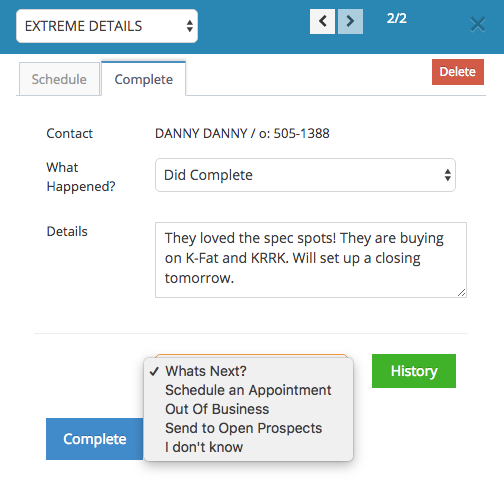
Different ways to view your calendar (click to open)
Printing your Calendar and what do the colors on the calendar represent? (click to open)
 You must open your calendar to begin this step.
You must open your calendar to begin this step.
Printing your Calendar and what do the colors represent :
Once you are on your calendar page, scroll to the bottom and you will see a small print icon on the bottom left of your calendar, as seen in the picture below.
Legend:
The legend lets you know what the colors and the icons mean on the calendar. The legend is located just to the right of the printer icon and is represented by four small squares (pictured above)
Tips and Tricks (click to open)
Tips and Tricks:
As you complete your appointments, the system will automatically bring you to your next appointment chronologically.
- You can also scroll through your appointments from the arrows on the blue bar above the open appointment. (Pictured below). You can also click directly on your appointment in the calendar to jump to them quickly.
- A great tool to use to make sure that you have completed all of your appointments and that you have a follow up appointment for all of your customers is to use the number system under the right arrow pictured below. As you can see in the example below, we are on the second appointment of the day out of the two that we needed to complete. As you complete these, the number will count down. Your goal at the end of each day is to get this down to 0/0. Benefit: You can sleep better at night knowing that you have taken care of all of your appointments and have follow up appointments set for all of your customers.
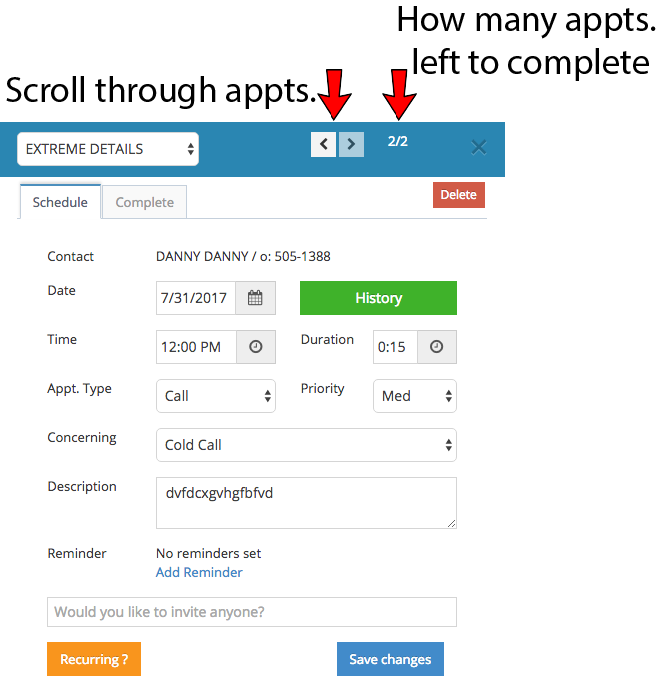
Tip: There are many benefits to completing your calendar with thorough detail
- All of the information that you put in your calendar is compiled and emailed to your manager each night. You don’t have to explain every little detail to your manager every time you see them.
- You have a complete history of what you said to your customers in the past. Once you start juggling 80+ customers, it’s easy to forget what you have discussed with each one. Entering detailed notes makes you a better, more efficient sales rep and makes your customers that much happier with your service and attention to detail.
- Easily access the history of a client by clicking on the green “History” button on the pop-up appointment pictured below. This way you do not have to search through your calendar to see what you’ve said to that customer in the past.


